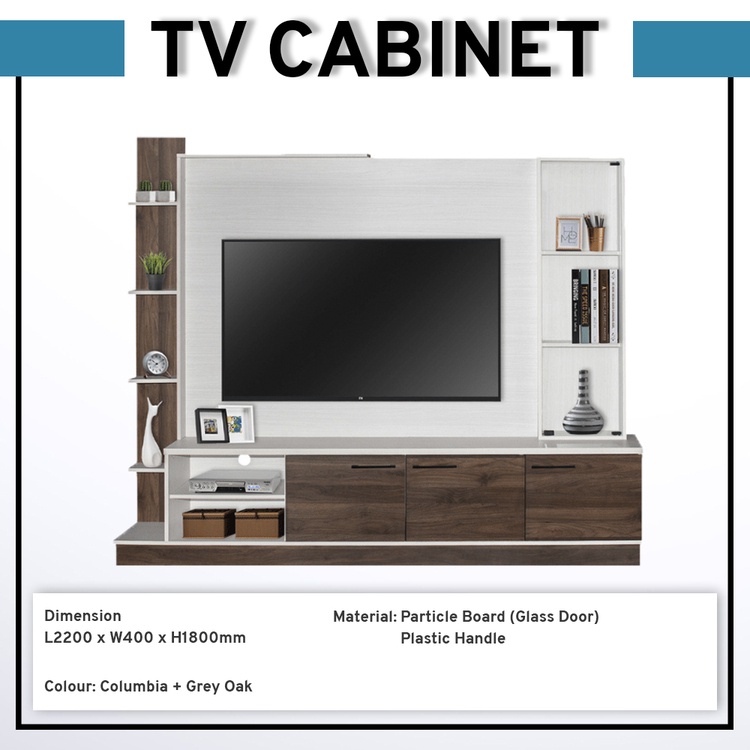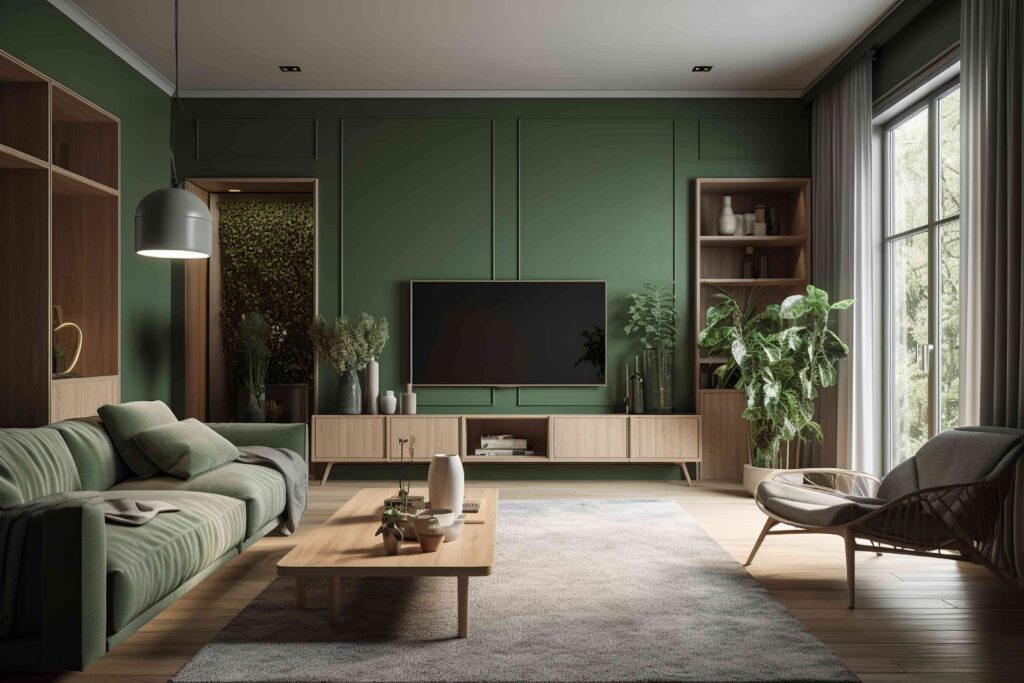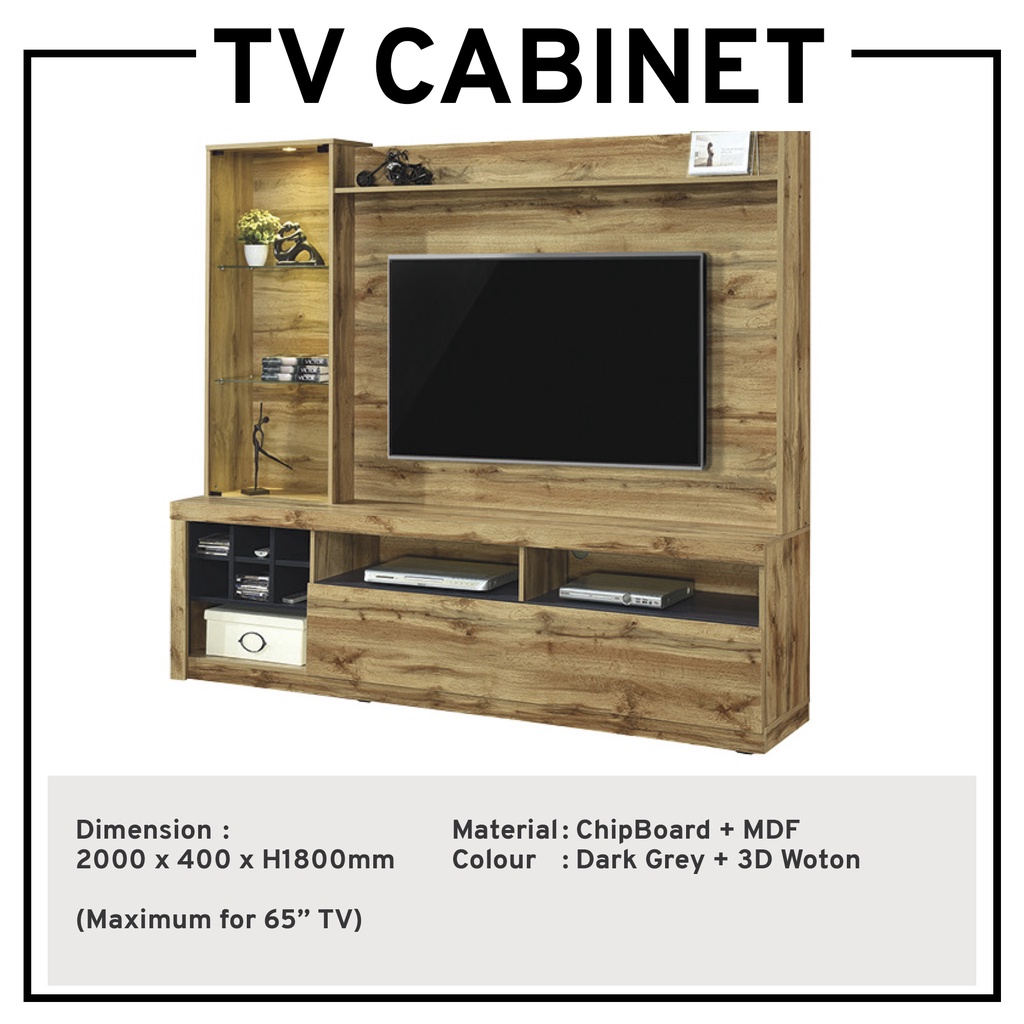TV Wall? Storage, Too! Genius!
TV Wall? Storage, Too! Genius!
Transforming a living room from a cluttered space into a stylish and functional haven is a goal many homeowners share. A central element often dominating the room – the television – presents a unique design challenge: how to incorporate it seamlessly while maximizing space and minimizing visual clutter. The answer often lies in a cleverly designed TV feature wall with storage. This isn't just about finding a place to put your TV; it's about creating a focal point that enhances your living space, cleverly integrates storage solutions, and elevates your home's aesthetic appeal. This article will explore the various aspects of creating the perfect TV feature wall with storage, offering practical advice, design inspiration, and solutions for different room sizes and styles.
The Allure of a Feature Wall
Before diving into the specifics of storage and TV integration, let's understand why a feature wall is such a popular design choice. A feature wall acts as a visual anchor, drawing the eye and setting the tone for the entire room. It can dramatically improve the aesthetic appeal of a living space, adding personality and character. By focusing on a specific wall, you create a sense of balance and deliberate design, avoiding the chaotic feel of a room where every element competes for attention.
A TV feature wall takes this concept a step further, elegantly integrating a potentially bulky and visually disruptive element into a cohesive and stylish design. Instead of letting the TV dominate the room negatively, a well-designed feature wall transforms it into a focal point that enhances the overall look and feel. This is particularly important in open-plan living spaces, where the TV can easily appear out of place or visually jarring without strategic placement and design.
Planning Your TV Feature Wall with Storage: Key Considerations
Creating a successful TV feature wall with storage requires careful planning and consideration of several key factors:
-
Room Size and Layout: The size of your living room will dictate the scale and design of your feature wall. In smaller rooms, a minimalist approach with cleverly integrated storage is crucial to avoid overcrowding. Larger spaces offer more flexibility, allowing for more elaborate designs and greater storage capacity. Consider the placement of other furniture – sofas, armchairs, etc. – to ensure optimal viewing angles and easy access to storage.
-
Storage Needs: Before you start designing, honestly assess your storage needs. What items do you want to store on or near the TV wall? This could range from media equipment (DVDs, Blu-ray players, gaming consoles) to books, decorative items, or even everyday essentials. Understanding your storage requirements is crucial for selecting the appropriate storage solutions.
-
TV Size and Type: The size and type of your TV will significantly impact the design of your feature wall. A large, flat-screen TV will require a substantial surface area to mount securely, while smaller TVs offer more design flexibility. Consider whether your TV is wall-mounted or sits on a stand, as this will affect the type of storage you can incorporate.
-
Style and Aesthetics: Your feature wall should complement your overall home décor. Consider the existing style of your living room – modern, minimalist, traditional, rustic, etc. – and choose materials, colors, and finishes that create a cohesive and harmonious look. The style should reflect your personal taste and enhance the overall aesthetic of your space.

- Budget: Setting a realistic budget is crucial. The cost of materials, installation, and any custom-built elements can vary significantly. By setting a budget beforehand, you can make informed decisions about materials and design elements that align with your financial constraints.
Design Options: Unleashing Creativity
Once you've considered these key factors, you can start exploring different design options for your TV feature wall with storage. The possibilities are vast and depend heavily on your individual preferences and the characteristics of your living room. Here are a few popular options:
-
Built-in Units: Built-in units offer a seamless and integrated approach to storage. They can be custom-designed to perfectly fit the space and incorporate features such as shelving, drawers, cabinets, and hidden compartments. Built-in units provide ample storage space and create a clean, sophisticated look. The downside is that they are usually more expensive and require professional installation.
-
Modular Shelving: Modular shelving units offer greater flexibility and affordability. They are available in various sizes, styles, and materials, allowing you to customize the arrangement to suit your needs and aesthetic preferences. Modular shelving is easy to assemble and can be rearranged as your needs change, making it a practical and versatile option.
-
Media Consoles and Cabinets: Media consoles and cabinets are readily available in various styles and sizes. They provide a convenient and stylish solution for storing media equipment and other items. These units can be placed either against the wall or as a standalone piece, offering flexibility in design and placement. The choice will depend on the desired level of integration with the wall.

-
Floating Shelves: For a minimalist and contemporary look, floating shelves can be incorporated to create a visually appealing display. Floating shelves are ideal for showcasing decorative items, books, or small media equipment. However, they offer limited storage capacity compared to other options.
-
Fireplace Integration: If your living room features a fireplace, consider incorporating the TV into a fireplace surround design that includes built-in storage. This creates a sophisticated and visually impressive focal point.
Materials and Finishes: Adding Personality
The choice of materials and finishes is essential in creating a visually appealing and functional TV feature wall with storage. Here are some popular options:
-
Wood: Wood offers a warm and natural look, suitable for various interior styles. Different types of wood, such as oak, walnut, or pine, provide different aesthetics and levels of durability.
-
Metal: Metal, such as steel or aluminum, offers a modern and industrial feel. It can be combined with wood or other materials to create a unique and visually striking feature wall.

-
Stone: Stone, such as marble or granite, provides a luxurious and sophisticated look. However, it's generally more expensive and requires professional installation.
-
Concrete: Concrete is a popular choice for industrial-style interiors. It offers a rugged and textural look.
-
Paint: Paint is a versatile and cost-effective way to create a feature wall. Different colors and finishes can be used to create various effects. A bold color can create a dramatic focal point, while a neutral color can provide a more subtle backdrop.

Lighting: Enhancing the Ambiance
Appropriate lighting is crucial in highlighting the TV feature wall and creating a pleasant viewing experience. Consider incorporating:
- Recessed Lighting: Recessed lighting provides even illumination and minimizes shadows.

-
Accent Lighting: Accent lighting can be used to highlight specific features, such as artwork or decorative items, on the shelves.
-
Task Lighting: Task lighting can be used to illuminate the TV screen and improve visibility.
-
Ambient Lighting: Ambient lighting sets the overall mood of the room and can complement the lighting from other sources.

Troubleshooting Common Challenges
During the design and installation process, you might encounter some challenges:
- Cable Management: Concealing cables is crucial for a clean and organized look. Consider using cable management systems, such as raceways or conduit, to hide unsightly wires.

-
Weight Capacity: Ensure that the wall and the chosen storage solutions can support the weight of the TV and stored items. Consult a professional if you're unsure about the structural integrity of your wall.
-
Ventilation: Ensure that there is adequate ventilation around the TV to prevent overheating. Avoid blocking vents or placing items too close to the TV.
Conclusion: A Seamless Blend of Style and Functionality

Creating a TV feature wall with storage is a rewarding project that can significantly enhance your living room's aesthetic appeal and functionality. By carefully considering your needs, exploring various design options, and selecting appropriate materials and finishes, you can create a unique and personalized feature wall that reflects your style and elevates your home's overall design. Remember to plan meticulously, consider the practicalities, and enjoy the process of transforming your living space into a stylish and organized haven. The result? A genius blend of form and function that will impress you and your guests for years to come.
TV Wall? Storage Too! Genius!
Transforming your living room into a stylish and functional space can be a challenge. We often grapple with the placement of our television, frequently the centerpiece of the room, and the inevitable storage needs that accompany modern living. But what if you could elegantly combine both? A TV feature wall with integrated storage isn't just a trend; it's a smart solution that maximizes space, enhances aesthetics, and simplifies your life. This article will delve into the planning, design, and execution of creating this ingenious home improvement project, exploring diverse styles and offering practical advice for a successful outcome.
Planning Your Dream TV Feature Wall
Before you even think about picking out paint colors or cabinetry, thorough planning is crucial. This stage sets the foundation for a successful and stress-free project. Here's a breakdown of the key planning considerations:
1. Assessing Your Space: Measurement and Functionality
The first step is a precise measurement of your wall space. Consider not only the width and height but also the available depth. Are there any existing electrical outlets or structural elements that need to be accommodated? A detailed sketch or even a digital model (using free software like SketchUp) can significantly aid in this process.
Next, assess your storage needs. What are you planning to store? DVDs and Blu-rays? Books? Gaming consoles and accessories? Knowing this will determine the type and amount of storage you require. Think realistically about your current possessions and anticipated future needs. Avoid overestimating or underestimating storage capacity – both can lead to regrets later.
Consider also the traffic flow in your living room. Will the TV wall obstruct movement or access to other areas? Leaving sufficient space for comfortable navigation is vital.
2. Style and Design: Choosing Your Aesthetic
The style of your TV feature wall should complement your existing décor. Do you prefer a minimalist aesthetic, a rustic charm, a modern sleek look, or something more eclectic? The chosen style will dictate the materials, finishes, and overall design elements.
Browse inspiration images online and in magazines. Pinterest and Houzz are excellent resources for finding ideas and visualizing different styles. Pay attention to the color palettes, materials used (wood, metal, glass), and the overall feel of the designs that appeal to you.
Remember to consider the size and shape of your TV. A large screen TV may require a larger wall unit or a more substantial design to avoid appearing disproportionate.
3. Budget and Materials: Realistic Expectations
Setting a realistic budget is paramount. TV feature walls can range from relatively inexpensive DIY projects to high-end custom installations. Factor in the cost of materials (wood, cabinetry, paint, hardware), labor (if hiring a professional), and any necessary electrical work.
Choosing the right materials is essential for both aesthetics and durability. Consider the following:

- Wood: Offers a classic and versatile look, available in various types and finishes.
- Metal: Provides a modern and industrial feel.
- Glass: Adds a touch of elegance and sophistication, but can be more fragile.
- Laminate: A more budget-friendly option that mimics the look of wood or other materials.
- Concrete: Offers a raw and industrial aesthetic.
Consider the durability and maintenance requirements of each material. For example, wood may require regular polishing, while laminate is generally more low-maintenance.
Designing Your TV Feature Wall: Creative Solutions
Once you've completed your planning phase, you can start designing your TV feature wall. This stage involves bringing your vision to life through detailed plans and material selections.
1. Incorporating Storage: Clever Design Choices
The heart of this project lies in the integration of storage. There are numerous ways to achieve this:

- Built-in Cabinets: Custom-built cabinets offer the most flexibility and tailored storage solutions. You can specify the size, number, and configuration of cabinets to perfectly meet your needs.
- Modular Shelving Units: Modular units provide a more flexible and adaptable approach. You can easily rearrange the shelves to suit changing storage requirements.
- Floating Shelves: These offer a minimalist approach, providing open storage for items you want to display.
- Media Consoles: Pre-fabricated media consoles are readily available in various styles and sizes, offering a convenient and often cost-effective solution.
- Combination Approach: A combination of different storage solutions can create a truly unique and functional feature wall.
Consider adding features like drawers, pull-out shelves, and hidden compartments to maximize storage capacity and maintain a clean aesthetic.
2. Concealing Cables and Wires: A Clean Look
A key aspect of a successful TV feature wall is effective cable management. Cluttered wires detract from the overall aesthetic and can create a disorganized look. Here are some ways to conceal cables:
- Cable Concealers: These are readily available in various materials and colors, providing a discreet way to hide cables behind the wall or along the baseboard.
- Cable Management Systems: These systems involve routing cables through walls or behind furniture for a completely hidden effect. This often requires professional installation.
- Cable Ties and Clips: A simpler and less expensive approach, using cable ties and clips to organize cables neatly.
- Built-in Channels: During the construction of built-in cabinets or shelving, incorporate channels to route cables discreetly within the structure.
Plan for cable management during the design phase to avoid complications later.

3. Lighting: Enhancing Ambiance and Functionality
Strategic lighting can significantly enhance the aesthetic appeal and functionality of your TV feature wall. Consider these options:
- Recessed Lighting: Provides a clean and modern look, evenly illuminating the wall and surrounding area.
- Accent Lighting: Highlights specific features, such as artwork or decorative elements.
- Task Lighting: Focuses light on particular areas, such as reading nooks or workspaces.
- Ambient Lighting: Creates a warm and inviting atmosphere.
- LED Strip Lighting: Offers a versatile and energy-efficient option for creating subtle backlighting or accent illumination.

Execution: Bringing Your Vision to Life
With detailed plans and selected materials, it's time to execute your TV feature wall project. This phase might involve DIY work or professional help, depending on your skills and the complexity of the design.
1. DIY vs. Professional Installation: Weighing the Options

A DIY approach can be rewarding and cost-effective, especially for simpler designs. However, complex installations requiring electrical work, custom cabinetry, or intricate carpentry are best left to experienced professionals. Assess your skill level honestly before starting. Underestimating the difficulty can lead to frustration and potentially costly mistakes.
If hiring a professional, get multiple quotes, check references, and ensure they have liability insurance. Clearly define the scope of work in a written contract.
2. Tools and Materials: Gathering Your Supplies

Gather all necessary tools and materials before beginning the project. This includes measuring tools, power tools (if applicable), safety equipment, and the chosen materials for the wall and storage elements. Create a detailed checklist to ensure you have everything on hand. Avoid starting the project only to discover a missing crucial item halfway through.
3. Step-by-Step Process: Execution Guidance
The exact execution process will depend on the chosen design and materials. However, here are some general steps:

- Wall Preparation: Ensure the wall is clean, smooth, and free of imperfections.
- Electrical Work (if applicable): Plan and execute any necessary electrical work, such as installing outlets or lighting fixtures. This should be done by a qualified electrician unless you have the necessary expertise.
- Installation of Storage Elements: Install cabinets, shelves, or other storage components according to the design plans.
- Cable Management: Route and conceal cables according to your chosen method.
- Finishing Touches: Paint, stain, or finish the wall and storage elements as desired.
- TV Mounting: Mount the TV securely and correctly.
Thoroughly test all electrical components after installation.
Conclusion: A Functional and Stylish Enhancement

A TV feature wall with integrated storage offers a compelling solution for maximizing space and enhancing the aesthetic appeal of your living room. By carefully planning, thoughtfully designing, and meticulously executing the project, you can create a unique and functional centerpiece that serves as both a focal point and a practical storage solution. Remember, the key to success lies in thorough preparation and attention to detail throughout the entire process. Whether you opt for a DIY approach or hire professionals, the result will be a stunning transformation that elevates your living space. So, go ahead and make that genius idea a reality!




